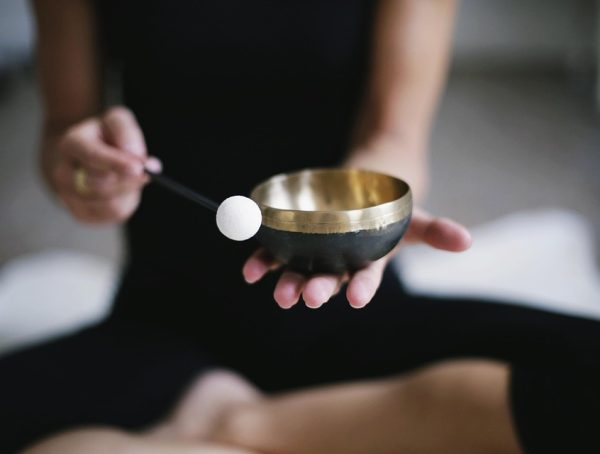The Ultimate List of 15 Different Meditation Styles Explained
Meditation is an ancient practice that has gained considerable popularity in the modern world. Its benefits range from improving mental health to enhancing focus and boosting overall well-being. As our interest in mindfulness continues to grow, so do the various styles of meditation. Each style offers a unique approach that caters to different preferences and goals. Whether you are a beginner or a seasoned practitioner, it’s essential to explore different techniques to find the one that resonates with you. Here’s a comprehensive guide to 15 different meditation styles.
1. Mindfulness Meditation
Description: Mindfulness meditation originates from Buddhist traditions and focuses on developing an awareness of the present moment. Practitioners observe their thoughts and feelings without judgment.
Action Steps:
- Find a quiet space and sit comfortably.
- Focus on your breath; notice each inhalation and exhalation.
- When your mind wanders, gently bring your attention back to your breath.
2. Transcendental Meditation
Description: This technique involves silently repeating a specific mantra to settle the mind into a profound state of rest and relaxation.
Action Steps:
- Choose a quiet location and sit comfortably.
- Close your eyes and silently repeat your chosen mantra for 20 minutes, twice a day.
3. Loving-Kindness Meditation (Metta)
Description: Loving-kindness meditation involves generating feelings of compassion and love towards oneself and others, fostering an open heart.
Action Steps:
- Begin by developing good wishes for yourself, then extend those wishes to loved ones, acquaintances, and even those with whom you have conflicts.
- Repeat phrases like “May I be happy, may I be healthy” and gradually expand your goodwill to others.
4. Body Scan Meditation
Description: This style focuses on bringing awareness to different parts of the body systematically, helping to relax and release tension.
Action Steps:
- Lie down comfortably and close your eyes.
- Focus your attention on your toes, gradually moving up to the crown of your head, noticing any sensations or tension along the way.
5. Zen Meditation (Zazen)
Description: Zen meditation emphasizes the practice of seated meditation (zazen), concentrating on posture and breath to cultivate a state of mindfulness.
Action Steps:
- Sit with your back straight and feet flat on the ground or crossed in a lotus position.
- Focus on your breath, counting each inhalation and exhalation while you remain aware of your surroundings.
6. Guided Visualization
Description: Guided visualization uses imagery to evoke a sense of peace and relaxation, often led by a facilitator or a recording.
Action Steps:
- Find a quiet place where you can either listen to a recording or follow a script that guides you through visualizing a peaceful scene.
- Engage all your senses to create a vivid imagination of your envisioned space.
7. Vipassana Meditation
Description: Vipassana is one of the oldest forms of meditation, aiming for insight into the nature of reality through heightened awareness of the body and mind.
Action Steps:
- Attend a Vipassana retreat or dedicate time daily to practice.
- Focus on the sensations in your body while observing your thoughts and emotional responses.
8. Chakra Meditation
Description: Chakra meditation aligns with the body’s energy centers, helping to balance physical and emotional well-being.
Action Steps:
- Sit comfortably and focus on each chakra from the root to the crown while visualizing them glowing brightly.
- Use specific sounds or mantras associated with each chakra to deepen your meditation.
9. Sound Bath Meditation
Description: This form of meditation uses sound frequencies, typically from instruments like crystal bowls or gongs, to promote relaxation and mindfulness.
Action Steps:
- Find a sound bath session near you or use recordings of singing bowls.
- Lie down comfortably and allow the sounds to wash over you, focusing on how they resonate in your body.
10. Qigong Meditation
Description: Qigong is a Chinese practice that combines movement, meditation, and breath regulation to cultivate the life force (Qi).
Action Steps:
- Explore classes or videos learning basic Qigong movements and postures.
- Practice synchronized breathing with gentle movements to connect body and mind.
11. Kundalini Yoga
Description: Combining meditation, movement, and breath control, Kundalini yoga aims to awaken the Kundalini energy at the base of the spine.
Action Steps:
- Attend a Kundalini class or follow online tutorials.
- Focus on a specific meditation sequence or breathwork to harness energy effectively.
12. Somatic Meditation
Description: Somatic meditation involves connecting with bodily sensations and movement for relaxation and self-awareness.
Action Steps:
- Take a few moments to observe any sensations in your body while breathing deeply.
- Allow your body to move naturally, following its impulses without judgment.
13. Mantra Meditation
Description: This technique is centered on the repetition of a specific mantra to focus the mind and elevate spiritual awareness.
Action Steps:
- Choose a mantra that resonates with you, such as "Om" or a personal affirmation.
- Set aside time daily to repeat the mantra, focusing on its sound and meaning.
14. Forest Meditation (Shinrin Yoku)
Description: Rooted in Japanese practice, forest meditation is about immersing oneself in nature to enhance physical and mental health.
Action Steps:
- Spend time in a forest or park, consciously engaging your senses to observe the sights, sounds, and scents around you.
- Allow nature’s influence to calm your mind and rejuvenate your spirit.
15. Breathwork Meditation
Description: Breathwork focuses specifically on conscious control of breathing patterns to increase mindfulness and relaxation.
Action Steps:
- Practice deep diaphragmatic breathing to enhance oxygen flow.
- Explore various techniques, such as box breathing or alternate nostril breathing, to experiment with their effects on your mental state.
Conclusion
With the numerous meditation styles available, each person can find a method that suits their needs and lifestyle. Whether you’re looking for relaxation, emotional healing, or spiritual growth, these styles offer diverse paths to enhance your well-being. Remember, consistency is key when it comes to meditation. Dedicate a few minutes daily to your chosen style, and with time, you’ll likely notice significant benefits.
Inspiration to Carry Forward: "The mind is like water. When it’s turbulent, it’s difficult to see. But when it’s calm, everything becomes clear." – Prashant Kumar
If you enjoyed this article or found it helpful, follow Kevin on Instagram (@KSteineman) for more insights and tips on health, wellness, and mindful living!
You might also like
More from Meditation
The Role of Mantras in Transcendental Meditation: A Deep Dive
The Role of Mantras in Transcendental Meditation: A Deep Dive Transcendental Meditation (TM) has garnered a significant following across the globe, …
The Science Behind Meditation: Improving Mental Health Naturally
The Science Behind Meditation: Improving Mental Health Naturally In today's fast-paced world, the pursuit of mental wellness has become paramount. Thousands …
Understanding the 7 Types of Meditation for Beginners
Understanding the 7 Types of Meditation for Beginners: A Path to Inner Peace Meditation has become a popular practice in recent …


































